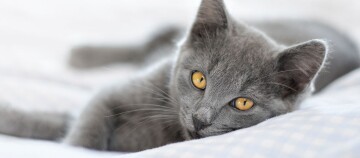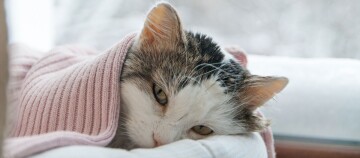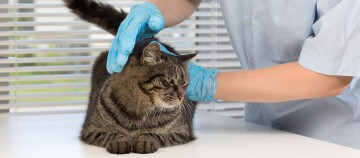A Closer Look - Keep Cats' Bones, Muscles and Joints Healthy
17.10.2022 - Reading time: 4 minutes
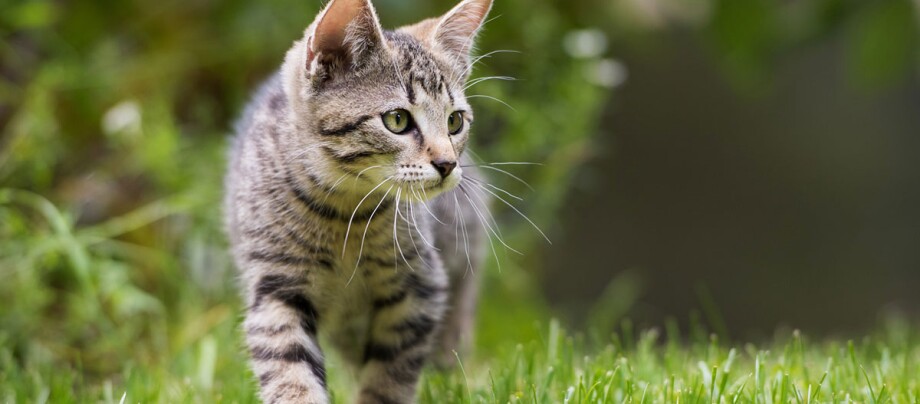
Jumping, climbing, agility - hardly any other animal fascinates humans so much with its elegance, suppleness and, last but not least, sheer breathtaking physical abilities. Whether it stalks silently through the grass to pounce on its prey in a fraction of a second, scales trees and cupboards at lightning speed or balances nonchalantly at dizzying heights: without its special physique, the velvet paw would not be capable of many of these things. Time to take a closer look at the cat skeleton.
What is the structure of the cat skeleton?
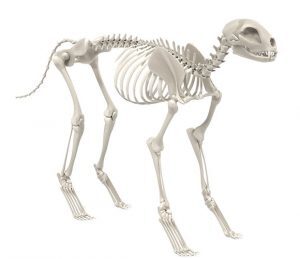
The skeleton of a cat is perfectly adapted to its way of life as a lurking hunter: The approximately 244 bones are light and stable, their number varies a little depending on the breed, essentially due to the length of the tail. The cat skull alone consists of 29 individual bones. The spine of a cat is composed of about 50 vertebrae, 20 of which are in the tail. In total, the cat has at least 40 more bones than a human. A special feature are the cat’s shoulders, which are only loosely connected to the skeleton by ligaments; there is only a rudimentary collarbone. Due to this structure, cats have a very narrow thorax, which enables them to slip through even narrow crevices. The skeleton is designed to be flexible enough to absorb the force of impact after long jumps or falls, provided there is enough time to perform the twisting reflex.
The cat’s high legs are also extremely robust. A cat has 13 pairs of ribs and these provide sturdy protection for the internal organs of the rib cage. The front paws of the cat are composed of the front root bone, the front metatarsal bone and the toes with the claws. The function of the front metatarsal is analogous to that of a human palm. This differentiated structure allows the cat to perform amazing fine motor movements. Some cats not only reach for prey, but also eat in a very mannerly way by carrying food from the bowl to the mouth with their paw.
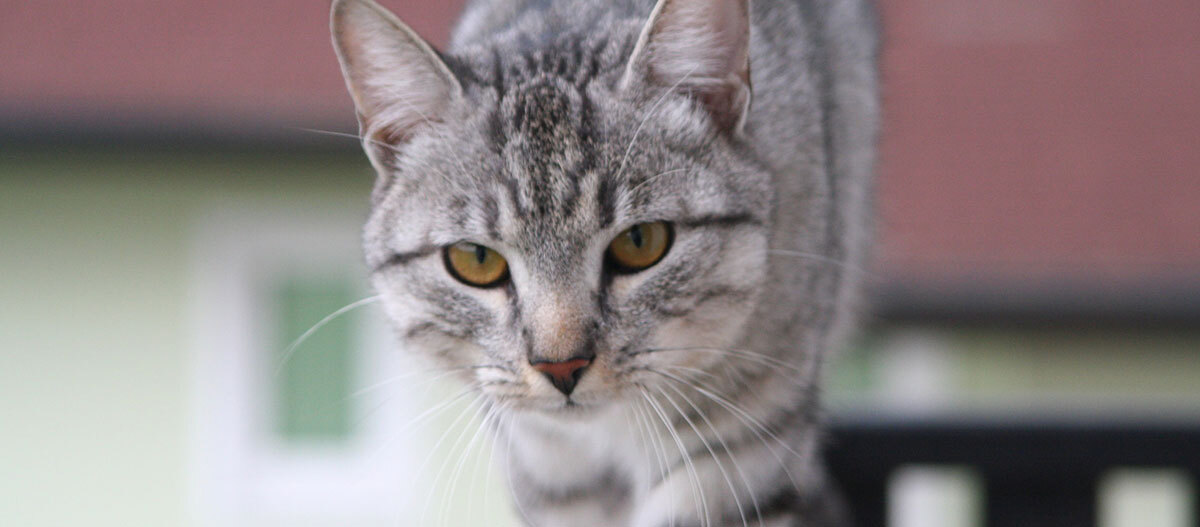
What can I do for bone injuries?
Even a supple acrobat can suffer a broken bone. You’ll quickly notice if your cat is noticeably resting a limb or has an abnormal posture. If your cat has a fracture, do not hesitate to visit the vet: A force strong enough to break a cat’s bone could also have caused tissue damage or internal injuries; these are more dangerous than the fracture if in doubt. If the risk has been clarified and it is really only the bone that is damaged, the chances of recovery are good: cats, as studies have shown, have a better healing potential for fractures than many other animal species. Simple fractures can be treated well with support bandages, several weeks of rest in the cage and a subsequent convalescence period. It becomes more complicated when surgical intervention with regular wound care becomes necessary.
How do muscles, tendons and bones interact?
The skeleton is one side of the cat’s anatomy. But for movement to come into the cat’s bones, a multitude of tendons, specialised muscles and flexible joints also play a part. In total, the cat’s body has about 500 freely movable muscles. The musculature of the hind legs in particular is astonishing: a fit cat can jump up to two metres from a standing position – this is equivalent to six times its body length. Their speed is also enormous: although a domestic cat is not quite as fast as its larger relative in the African savannah: cheetahs reach top speeds of 110 kilometres per hour, but only over short distances. But even the domestic cat can sprint amazingly fast when romping and hunting. In the process, their muscles quickly overheat: cats are not tireless endurance athletes. However, sneak hunting is much more demanding for the muscles and no less strenuous: when stalking, the cat performs extremely slow muscle movements.
How can I keep my cats' bones, muscles and joints healthy?
Most of a cat’s mobility problems are indirectly or directly related to diet. Especially overweight is poison for the petite skeleton and agility: deformities or arthrosis can easily develop due to wear and tear of the joints. This procedure manifests itself insidiously.
Therefore, keep a constant eye on young and slim cats:
- Enough exercise and play, especially for indoor cats: An athletic cat stays slim and exercises its muscles.
- High-quality food in moderation: pay attention to the quality of the food. As with human food, hidden sugars and fats can add unnecessary calories. If your pet turns out to be a glutton, you should reduce the quantity or choose lower-calorie products.
- If necessary, feed supplements based on gelatine/collagen hydrolysate can help to keep the cat’s muscles and joints healthy.
- Avoid the risk of accidents: a fall from the balcony or a traffic accident could end with a broken bone. Check the home and its surroundings for potential sources of danger and remove them. Provide security, for example with a cat net on the balcony or window locks.
You should also pay special attention to the stability of the bones.
The following factors can damage the stability of the bones:
- Thyroid and kidney diseases
- Over-supply of vitamin A (too much liver in the feed)
- Vitamin preparations in excess
- Vitamin D deficiency
- Calcium deficiency (with exclusive meat feeding)
